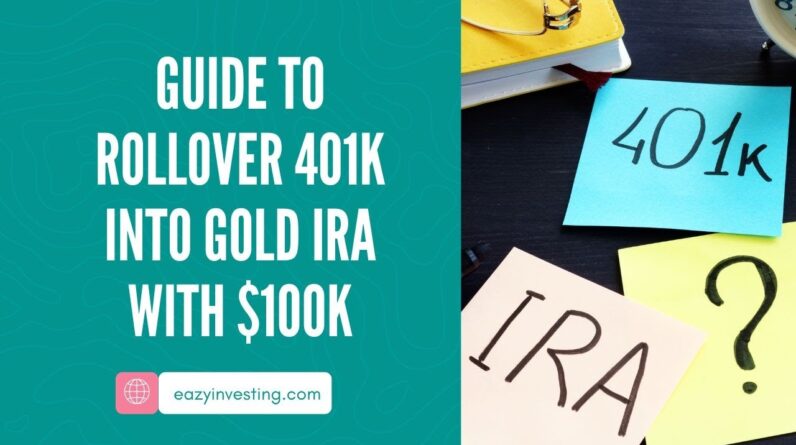Welcome to our blog post where we delve into the intriguing topic of “Investing for Cashflow versus Capital Gains.” In this insightful conversation, we had the privilege of sitting down with two experts in the field, Greg Arthur and Andy Tanner. Join us as we explore their valuable insights and gain a deeper understanding of the contrasting strategies of investing for cashflow and capital gains. Let’s dive in and uncover the secrets to making informed investment decisions that align with our long-term goals and aspirations.
Investing for Cashflow versus Capital Gains: A Conversation with Greg Arthur and Andy Tanner
Introduction:
In today’s rapidly changing financial landscape, it’s crucial to explore various investment strategies to secure our future. The traditional approach of letting our money sit in a savings account is no longer sufficient. Instead, the wealthy put their money to work, seeking opportunities that can generate cash flow and capital gains. In this article, we delve into a conversation between financial experts Greg Arthur and Andy Tanner, who discuss the two primary investing methods: cash flow and capital gains. Let’s explore the differences and understand how they can impact our financial future.
Investing for Cash Flow:
Investing for cash flow involves generating income through regular payments. This approach prioritizes creating a steady stream of passive income by investing in assets like real estate, dividend-paying stocks, or business ventures. The goal is to build a portfolio that generates sufficient cash flow to cover living expenses, provide financial stability, and create opportunities for growth. As Greg Arthur puts it, “Cash flow investing is like putting your money to work while sipping margaritas on a beach.”
Key points about investing for cash flow:
- Real estate rental income: Investing in real estate properties and receiving monthly rental income is a popular way to generate cash flow. It offers the potential for consistent returns and long-term wealth accumulation.
- Dividend-paying stocks: Dividends are periodic distributions of profits made by companies to their shareholders. Investing in stocks that pay regular dividends can provide a reliable cash flow stream.
- Business ventures: Starting or investing in a business that generates consistent profits can also lead to significant cash flow. It allows for more control over the income generated.
Investing for Capital Gains:
Investing for capital gains, on the other hand, focuses on buying assets with the expectation that their value will increase over time. This approach involves purchasing assets like stocks, bonds, or commodities at a lower price and selling them at a higher price later. Investors aim to profit from the appreciation of the asset’s value, capitalizing on market trends and timing.
Key points about investing for capital gains:
- Stock market investments: Investing in stocks that have the potential to increase in value can lead to significant capital gains. Researching and identifying undervalued stocks or upcoming market trends can help maximize returns.
- Speculative investments: Some investors take higher risks by investing in volatile assets like cryptocurrencies, futures contracts, or options. These investments can offer substantial capital gains, but they also carry higher levels of risk.
- Market timing: Timing the market plays a crucial role in capital gains investing. Buying low and selling high is the primary objective, and investors need to stay informed about market conditions and trends.
Greg Arthur and Andy Tanner’s Conversation:
In their conversation, Greg Arthur and Andy Tanner discuss the different outcomes of cash flow and capital gains investing. They emphasize the importance of understanding both approaches and tailoring investment strategies to individual goals and risk tolerance.
According to Greg Arthur, “Cash flow investing offers stability and consistent income, while capital gains investing can lead to rapid wealth accumulation if timed right.” Both strategies have their place in a diversified investment portfolio, and it’s essential to strike a balance between them, depending on one’s financial aspirations and circumstances.
Greg Arthur also highlights the significance of gaining proper education before investing. Attendees of Andy Tanner’s free webinar, “Zero to Cashflow in 30 Days,” can learn valuable insights about cash flow investing and explore opportunities to kickstart their journey towards financial success.
Conclusion:
When it comes to investing, it’s crucial to consider multiple strategies and understand the differences between investing for cash flow and capital gains. Both approaches have their merits, and a balanced portfolio should incorporate elements of both. However, it’s essential to remember that investing involves risks, and decisions should be made with careful consideration after gaining appropriate education and understanding of the opportunities available.
FAQs:
-
Is investing for cash flow risk-free?
Investing for cash flow carries its own set of risks, such as non-paying tenants, market fluctuations, or economic downturns. However, building a diversified cash flow portfolio can mitigate these risks to a certain extent. -
Can I invest for both cash flow and capital gains simultaneously?
Absolutely! A well-diversified investment portfolio can include assets that generate both cash flow and capital gains. It’s all about finding the right balance that suits your financial goals. -
Do I need to be a billionaire to invest for cash flow?
Not at all! Cash flow investing can start from small-scale ventures like purchasing rental properties or investing in dividend-paying stocks. It’s all about taking the first step and gradually building your portfolio. -
How do I learn more about cash flow investing?
Attend Andy Tanner’s free webinar, “Zero to Cashflow in 30 Days,” to gain valuable insights and explore cash flow opportunities. Remember, always educate yourself before making any investment decisions. -
Is capital gains investing suitable for short-term goals?
Capital gains investing is generally more suitable for long-term goals, as it can take time for assets to appreciate in value. Short-term goals may benefit more from investments focused on generating immediate cash flow.
(Note: This article is for informational purposes only and not financial advice. Make your own decisions and consult with a professional before investing.)










